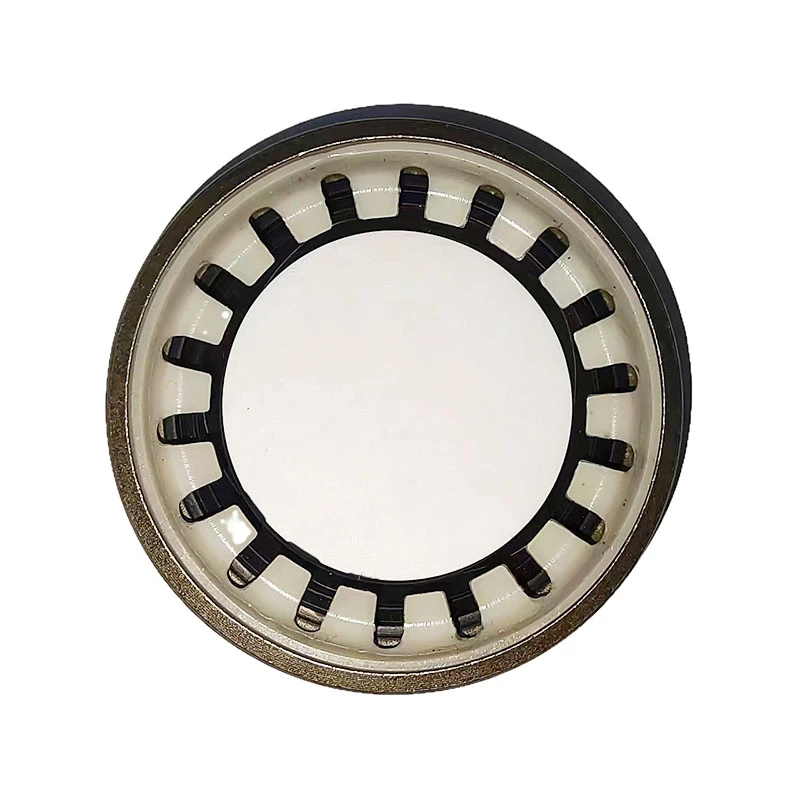high pressure oil seals
Understanding High-Pressure Oil Seals Essential Components in Modern Machinery
In the realm of mechanical engineering and industrial applications, the effectiveness of machinery often hinges on the performance of critical components. Among these components, high-pressure oil seals play a vital role. These seals are designed to contain oil and lubricant under high-pressure conditions, preventing leakage and ensuring that machines operate efficiently. This article delves into the importance, types, applications, and maintenance of high-pressure oil seals.
Importance of High-Pressure Oil Seals
High-pressure oil seals are pivotal in extending the lifespan and reliability of machinery. They serve several essential functions
1. Leak Prevention One of the primary functions of oil seals is to prevent the leakage of lubricants. This is crucial, as oil leaks can lead to decreased lubrication, resulting in increased wear and tear on mechanical parts and eventually causing machinery failures.
2. Contamination Protection Oil seals also act as barriers against contaminants such as dust, dirt, and moisture. These foreign particles can cause significant damage to the machinery if they infiltrate the lubricant, leading to premature equipment failure.
3. Pressure Maintenance In high-pressure environments, maintaining internal pressure is crucial for optimal performance. Oil seals help maintain the necessary pressure levels by sealing the spaces between moving components, preventing the escape of oil.
Types of High-Pressure Oil Seals
High-pressure oil seals come in various designs and materials, each suited for different applications and operating conditions. Some common types include
1. Lip Seals Featuring a flexible lip that conforms to the shaft surface, lip seals are widely used in rotating equipment. The lip creates a dynamic seal, effectively preventing oil leakage while allowing the shaft to rotate freely.
2. O-Rings O-rings are circular seals made from elastomers that fit into grooves to block fluid flow. They are versatile, durable, and can withstand high pressures, making them suitable for a range of applications.
3. U-Cups U-cup seals are designed to retain lubrication while also preventing leakage. Their U-shaped cross-section allows them to handle high pressures effectively, making them ideal for hydraulic systems.
4. Mechanical Seals Often used in pumps and compressors, mechanical seals comprise two flat surfaces that slide against each other, maintaining a seal under high pressure. They are effective for preventing leakage of fluids in dynamic applications.
Applications of High-Pressure Oil Seals
high pressure oil seals

High-pressure oil seals are found in various industries, including automotive, aerospace, manufacturing, and oil and gas. Here are some specific applications
1. Automotive In vehicles, high-pressure oil seals are used in engines, transmissions, and differentials. They help maintain oil pressure and oil integrity, which is crucial for the efficient operation of the vehicle.
2. Hydraulic Systems Hydraulic machinery relies on high-pressure oil seals to maintain fluid containment and system pressure. These seals are critical in ensuring the reliability and safety of hydraulic systems.
3. Industrial Equipment In manufacturing, high-pressure oil seals are used in pumps, compressors, and bearings. They ensure that lubricants remain in place, reducing maintenance needs and extending the service life of equipment.
4. Oil and Gas Industry In drilling rigs and other oil extraction equipment, high-pressure seals are necessary to handle the extreme conditions and prevent oil leaks, safeguarding both equipment and the environment.
Maintenance of High-Pressure Oil Seals
Proper maintenance of high-pressure oil seals is vital for ensuring their longevity and performance. Here are some maintenance tips
1. Regular Inspections Routine checks for signs of wear, damage, or leaks can help identify issues before they escalate. During inspections, look for cracks, deformities, or material degradation.
2. Proper Installation Ensuring that seals are installed correctly is crucial. Misalignment or improper fitting can lead to leaks or premature failure.
3. Material Compatibility Selecting the right seal material for the specific application is essential. Consider factors such as temperature, pressure, and the type of lubricant when choosing oil seals.
4. Replace Worn Seals Promptly If a seal shows signs of wear or damage, replace it immediately to prevent operational issues and costly repairs.
Conclusion
High-pressure oil seals are integral components that ensure the efficiency and reliability of various mechanical systems. By preventing leaks, protecting against contamination, and maintaining pressure, these seals significantly contribute to the performance and longevity of machinery. Understanding their types, applications, and maintenance helps industries optimize their operations and minimize downtime. As technology progresses, the development of even more effective sealing solutions will continue to enhance the performance of high-pressure systems across diverse industrial applications.
-
The Ultimate Guide to Boat Propeller Bearings and Trailer Wheel Bearings
News Jul.31,2025
-
The Essential Guide to Marine Bearings and Boat Trailer Wheel Bearings
News Jul.31,2025
-
The Complete Guide to Heavy Duty Seals: Protecting Doors and Spaces Efficiently
News Jul.31,2025
-
Essential Guide to Marine Shaft Bearings and Boat Trailer Axle Bearings
News Jul.31,2025
-
Comprehensive Guide to Marine and Trailer Bearings for Safe Boating and Transport
News Jul.31,2025
-
Comprehensive Guide to Automotive Oil Seals: Protecting Your Engine and Shafts
News Jul.31,2025
-
Understanding Automotive Oil Seals: Essential Components for Engine and Shaft Protection
News Jul.30,2025
Products categories















